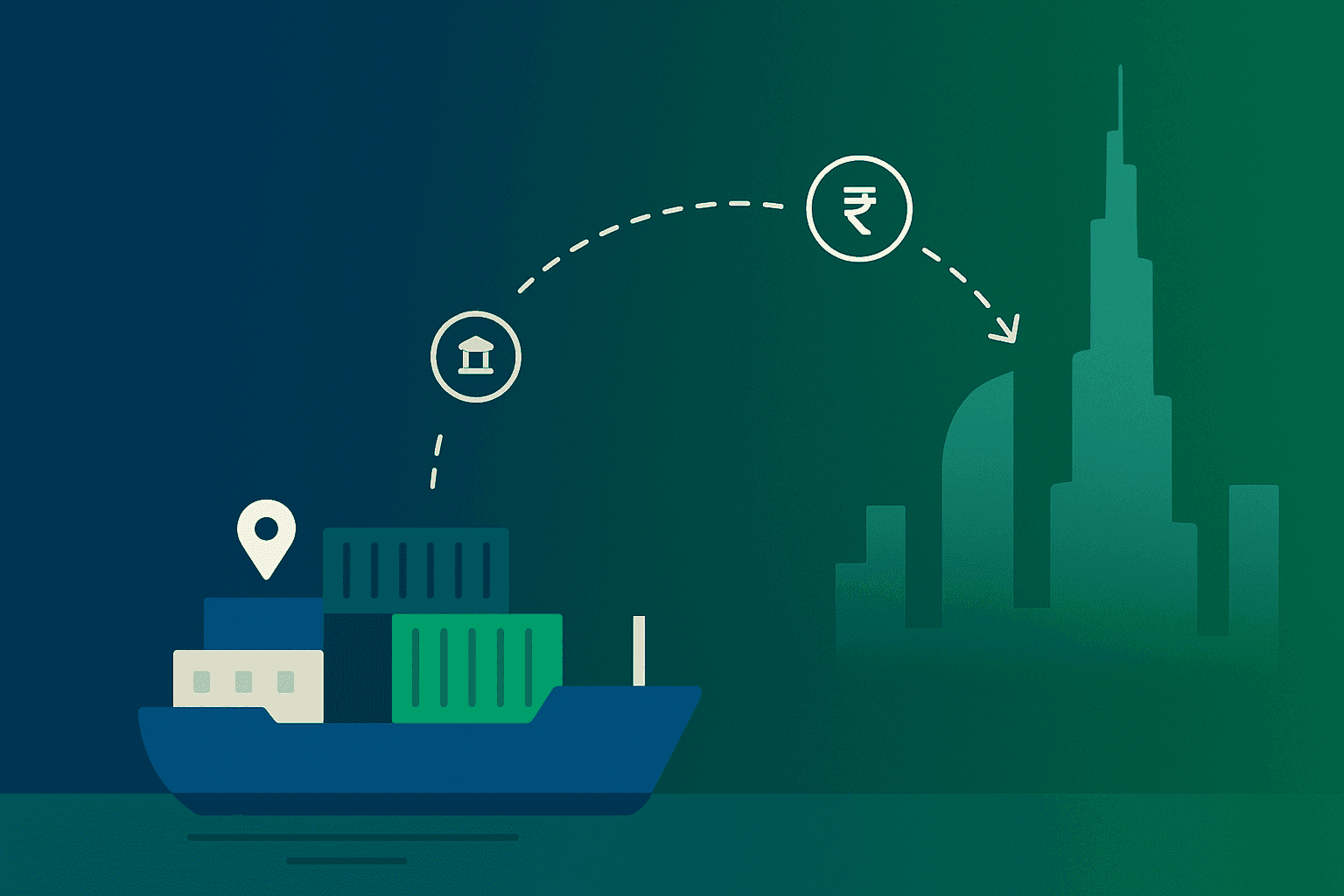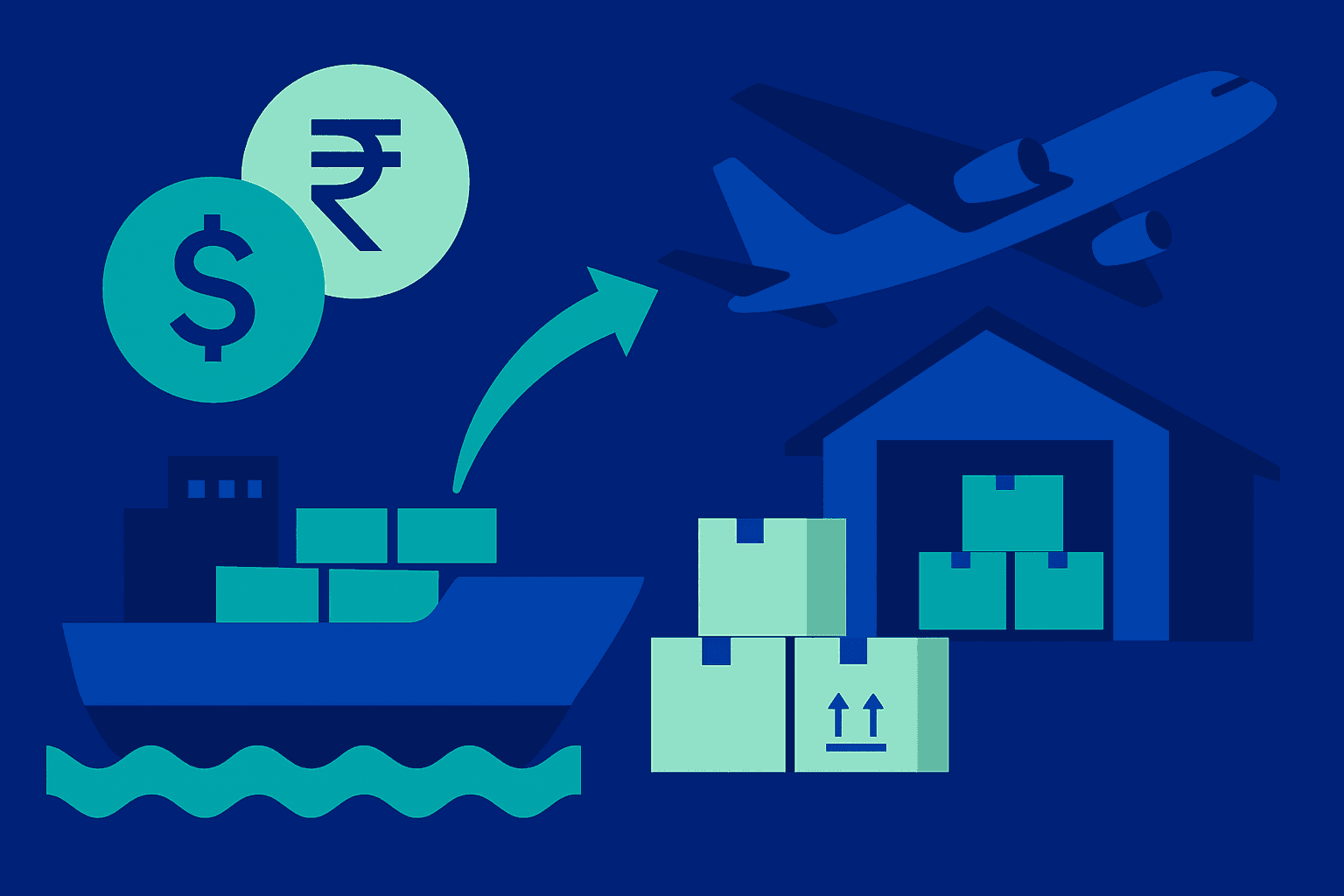5 Best Global Payment Solutions for International Payments in 2024
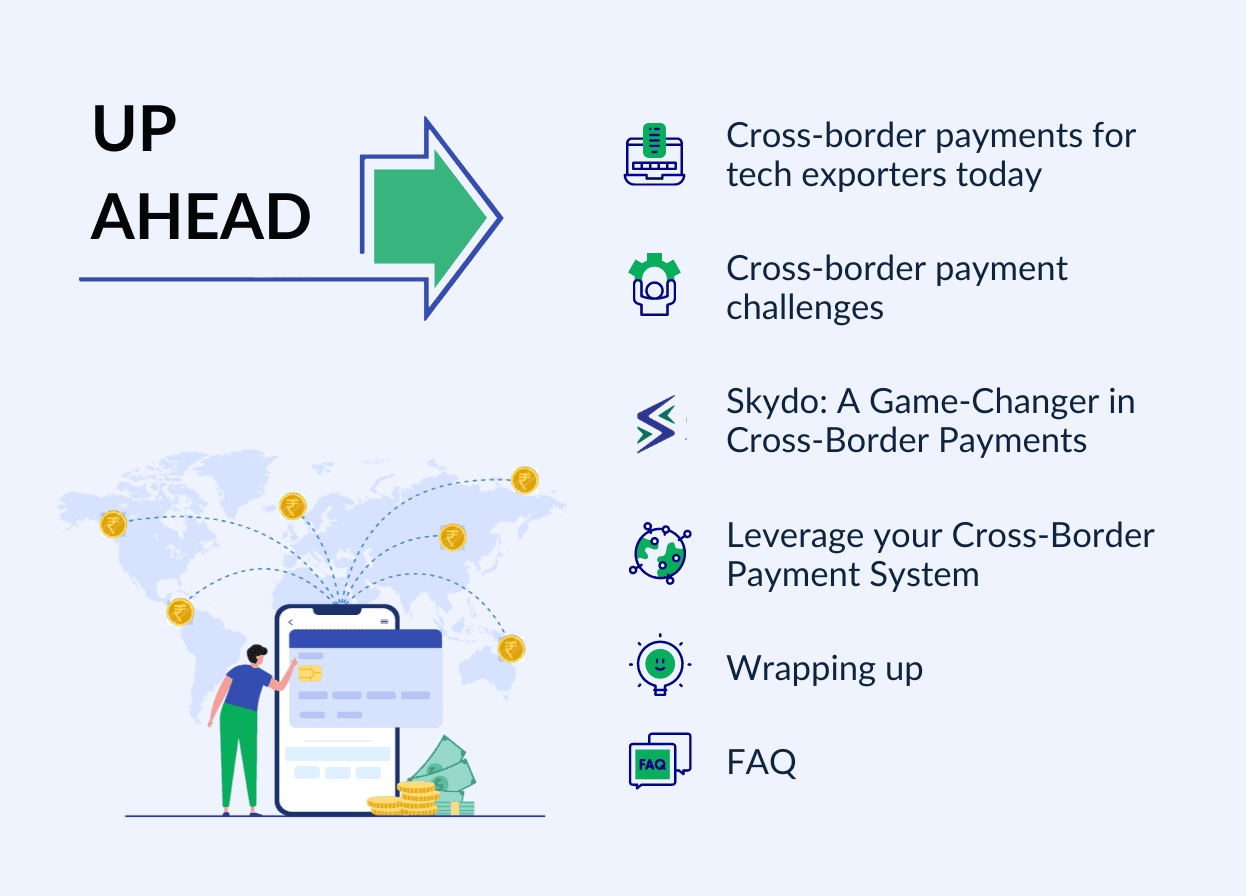

For enterprises catering to a diverse global clientele, selecting an appropriate international payment gateway is essential. Such payment solutions streamline operations significantly by eliminating the need for a physical account in each country.
Furthermore, it provides accurate currency conversions, ensuring you receive payments in your preferred currency.
However, with numerous options in the market, selecting the right one requires thoughtful consideration. Here are the five best expert-picked payment solutions and things to consider before choosing the right one for your business.
Skydo is a modern international payment gateway that simplifies cross-border B2B payments. It cuts foreign exchange charges by over 50%, making global transactions more cost-effective.
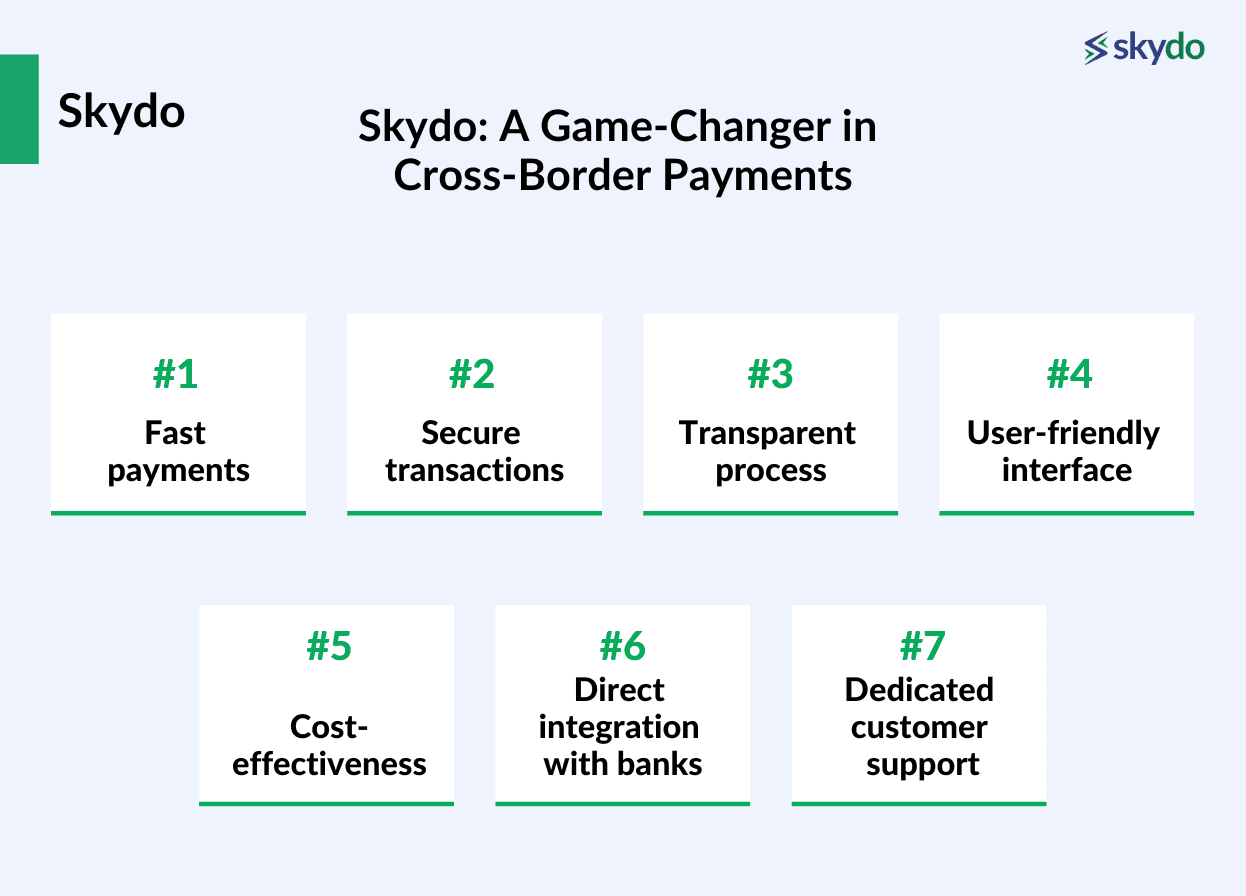
Through collaborations with leading banks worldwide, Skydo provides businesses with virtual foreign accounts, eliminating tax and compliance complexities.
They offer real-time currency conversion at the live FX rate, free from markups, and a straightforward flat fee of just USD 19 for transactions up to USD 2000 and USD 29 for transactions above USD 2000 to USD 10000.
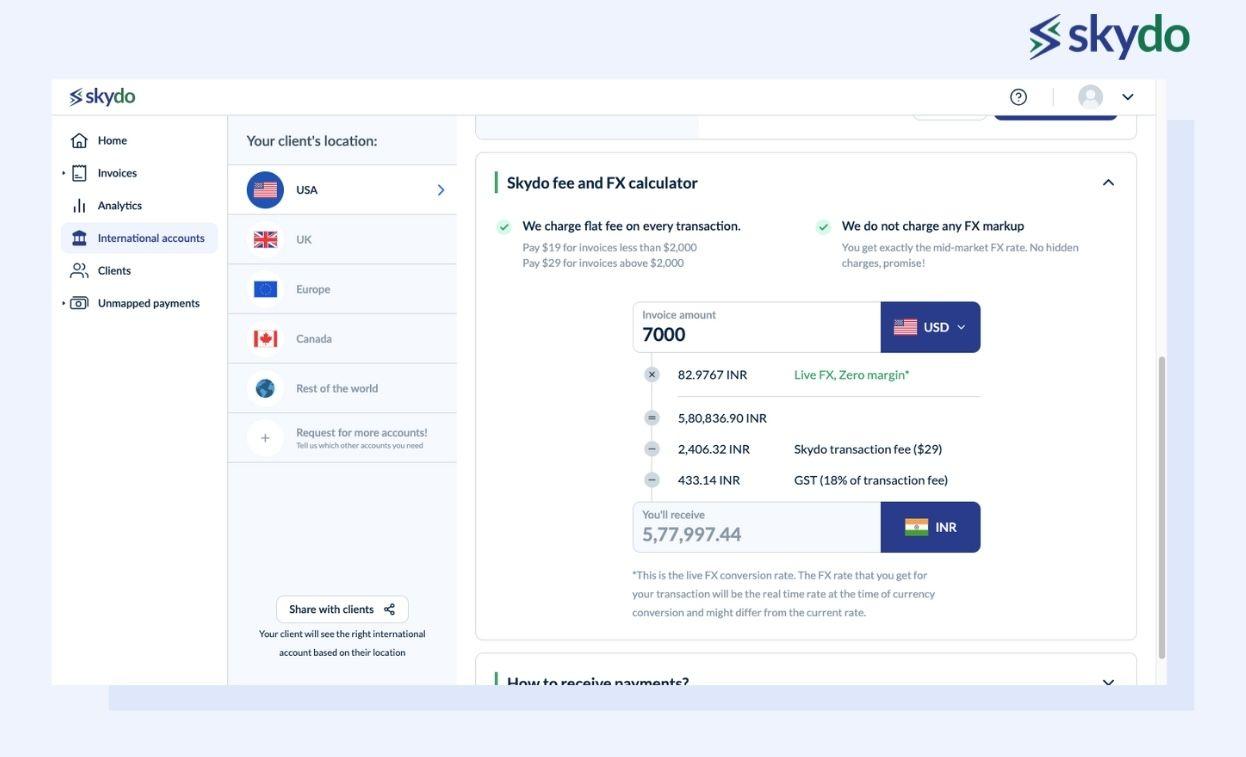
With a swift 5-minute onboarding process, Skydo prioritises efficiency.
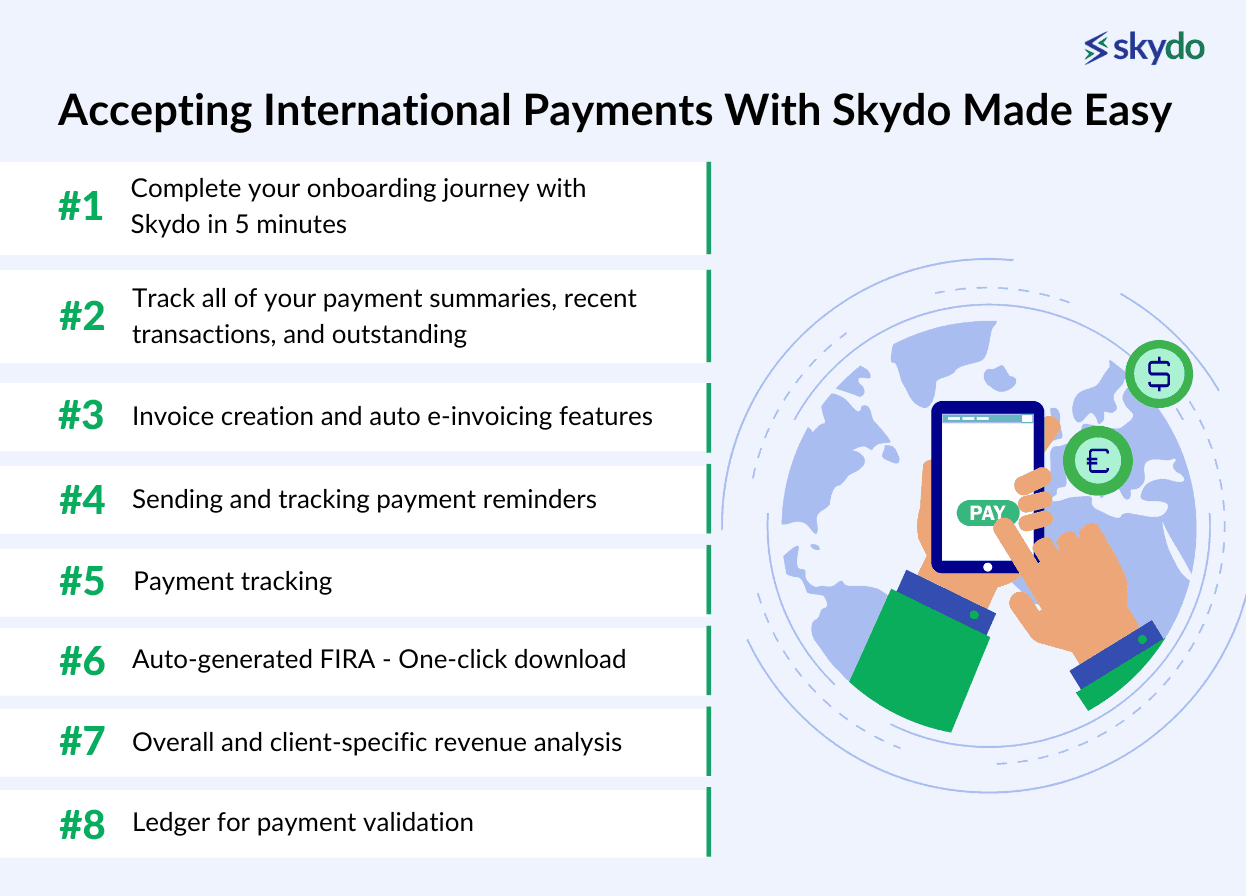
Businesses opting for Skydo find advantages in reduced foreign exchange charges, transparent pricing, and a user-friendly platform for seamless cross-border transactions.
2. Wise
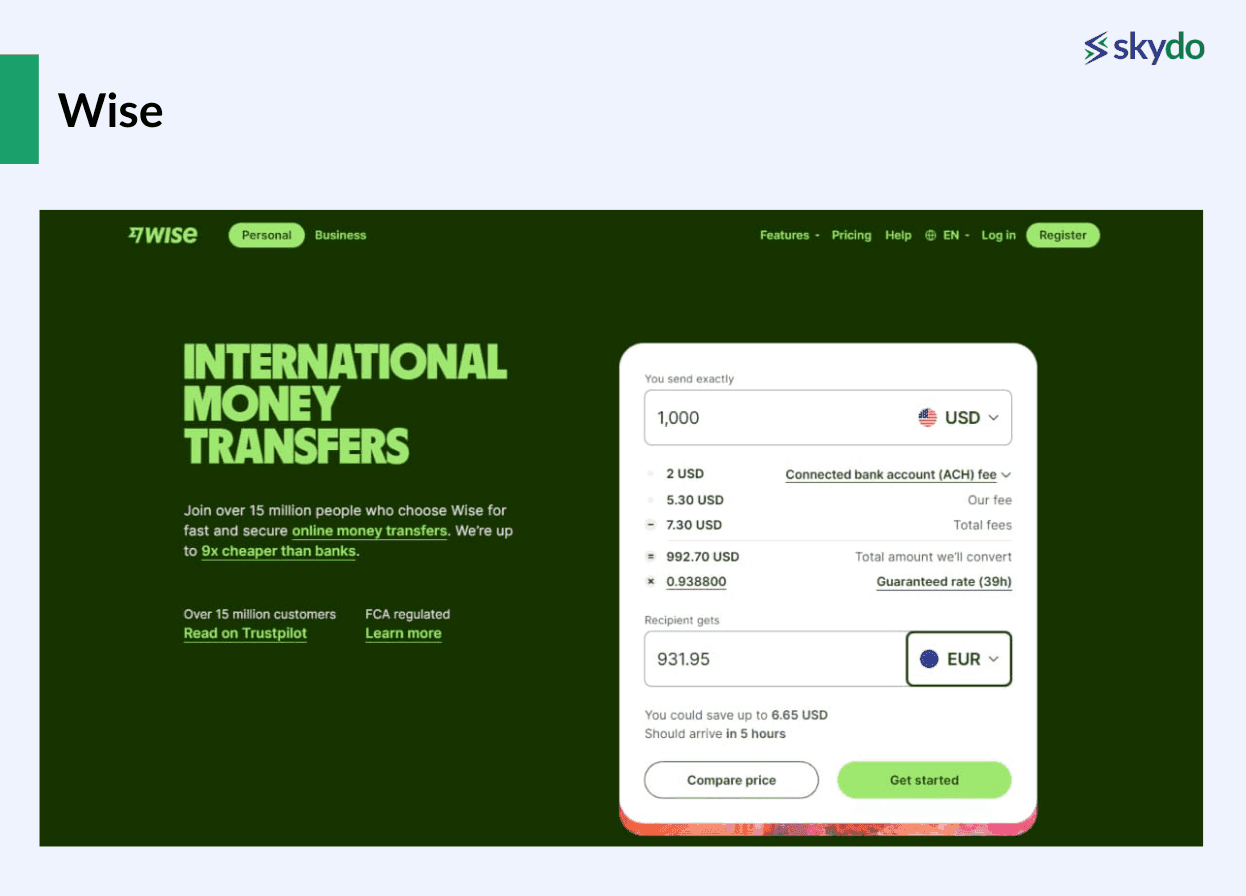
Wise is a prominent financial technology company specialising in international money transfer services. Through their platform, individuals and businesses can conduct cross-border transactions at more advantageous exchange rates.
The fee varies based on the currency. Typically, Wise charges around 30.69 USD for a 1000 USD transaction.
Pros
- Wise provides multi-currency accounts and borderless banking solutions.
- No exchange rate markup on transfer applies.
Cons
- Charges vary based on the currency.
- There is limited information on potential chargeback issues.
3. Payoneer
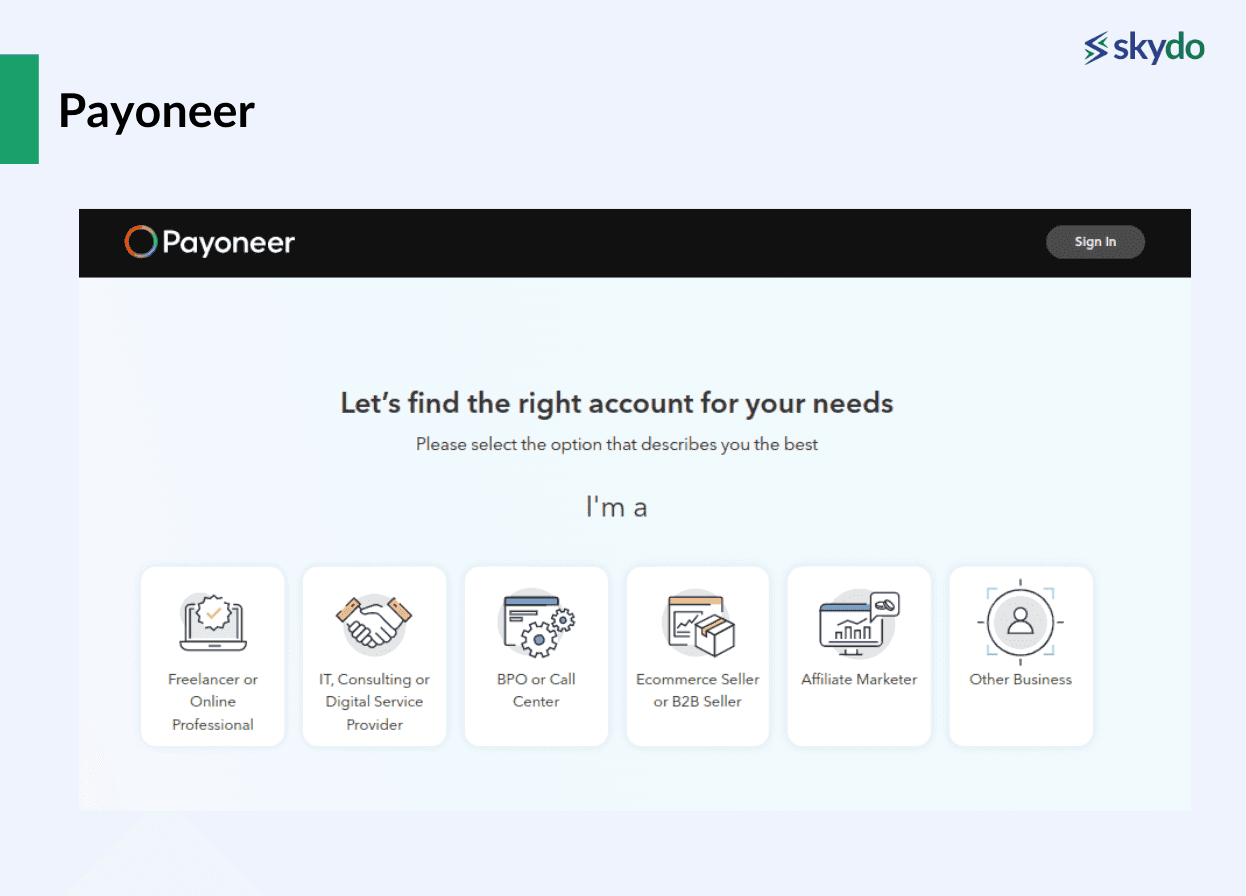
Payoneer is a global financial services company offering online money transfer and digital payment services. Its mission is to simplify cross-border transactions, providing businesses and professionals with a seamless way to send and receive funds on an international scale.
Their transaction fees include a 2% foreign exchange markup per transaction.
Pros
- Payoneer extends its services through a prepaid Mastercard, enabling users to withdraw funds from ATMs and make online and in-store purchases.
- They provide a complimentary integrated invoice builder.
Cons
- They impose an annual maintenance fee of USD 29.95.
- No transparent and detailed breakdown of the fees is available.
4. Salt.pe
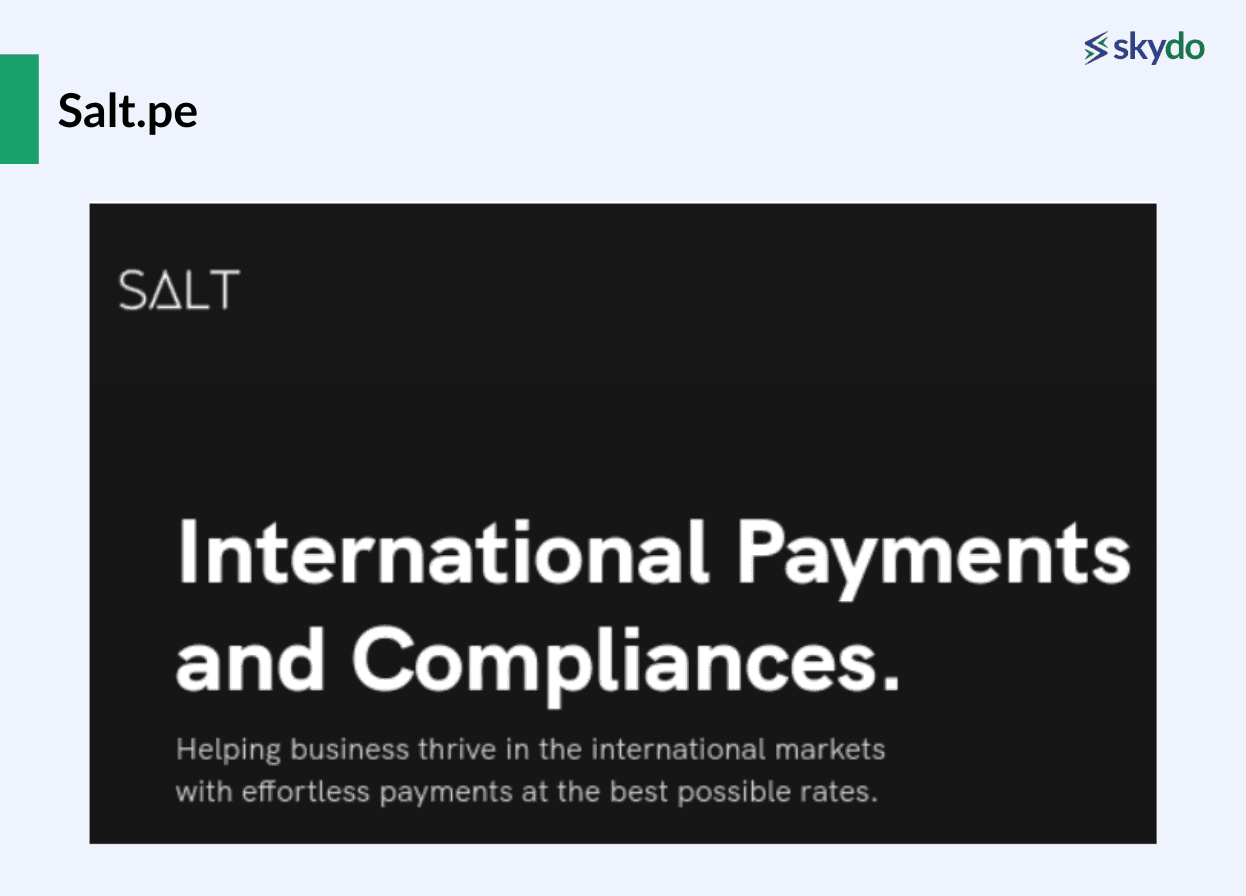
Salt.pe, a startup headquartered in Bengaluru, is dedicated to simplifying cross-border payments for Indian businesses. They enable Indian enterprises to receive payments from abroad effortlessly by providing local account details in seven foreign currencies: USD, GBP, EUR, HKD, AUD, SGD, and CAD.
Salt.pe applies a flat fee of 1.75% per transaction.
Pros
- Salt.pe operates on Google rates for currency conversion to INR.
- No additional sign-up fees or subscription charges are associated with using the service.
Cons
- Businesses can receive payments in only seven specific foreign currencies. This limits their scope for operating in regions with other prevalent currencies.
5. Paypal
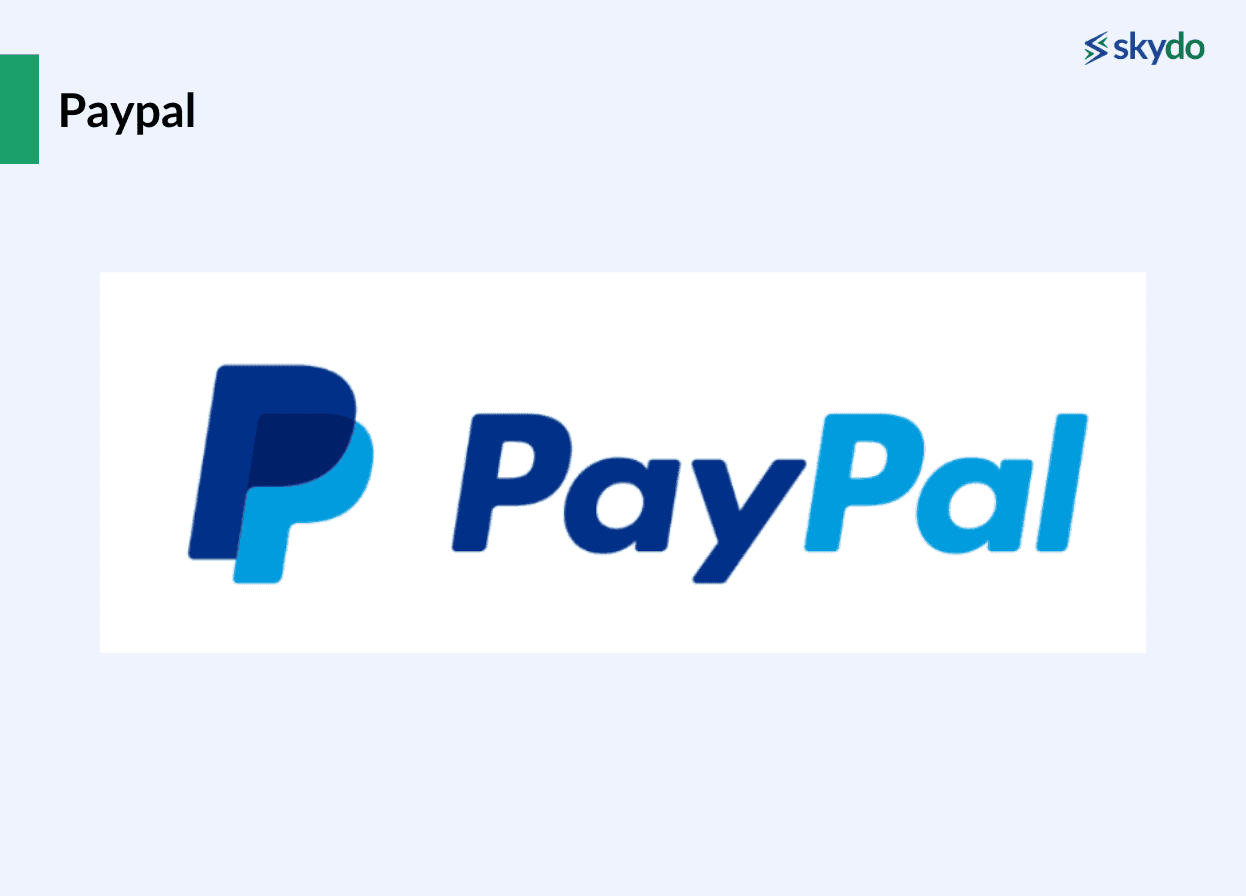
PayPal is a popular online payment platform that ensures secure financial transactions for users engaging in digital purchases, fund transfers, and receipt of payments.
PayPal applies a transaction fee of 4% of the transaction amount, with a fixed cost determined by the received currency. Furthermore, for transfers out of PayPal, they impose an additional 3.0% above the base exchange rate, with other associated merchant fees.
Pros
- Paypal offers various services beyond payment processing, like invoicing and facilitating money transfers.
- It is recognised and widely used globally.
Cons
- Lack of transparency in exchange rate markup during the invoice initiation process.
- Additional fees for currency conversion and transfers out.
These solutions solve payment problems that you may currently have. But which one should you choose?
Things to Consider When Choosing Your Payment Solution
1. Transaction fees and rates
For each processed transaction, payment solutions typically apply fees that vary based on payment method, transaction volume, and currency conversion.
It's crucial to compare transaction fees and rates across various payment gateways to identify the optimal choice for your business.
2. Payment methods and currencies
Select a payment solution that accommodates your customers' preferred payment methods like debit cards, credit cards, bank transfers, and currencies prevalent in your business's target markets.
3. Integration and seamless user experience
Prioritise a solution that depicts user-friendliness, ensuring a seamless and intuitive payment process for your valued customers.
This strategic choice enhances operational efficiency and contributes significantly to a positive customer experience.
4. Customer support
Evaluate how well your payment partner delivers customer support. Swift and effective support is vital, especially when dealing with technical issues or resolving disputes.
Conclusion
The optimal global payment solution is a cornerstone for achieving operational excellence and fostering positive customer experiences.
Achieving a customised fit requires a deep dive into particulars such as transaction fees, supported payment methods, and the quality of customer support.
If you are searching for a payment solution, understand your and your customer’s payment needs, conduct comprehensive research, and make informed decisions. This approach ensures the integration of a solution that precisely aligns with your distinct requirements.
Frequently Asked Questions
Q1. What are the biggest differences between the fees and exchange rates offered by these platforms?
Ans. Differences in fees and exchange rates exist across international payment gateways. It's essential to compare them, considering some may have lower transaction fees but less favourable exchange rates, while others might offer competitive rates with higher fees. Transparent fee structures should be a priority, as well as an understanding of any hidden charges.
Q2. Is there a minimum or maximum amount I can send/receive through any of these platforms?
Ans. Yes, most platforms have transaction limits. RBI's Operational Guidelines for Payment Gateways and Payment Aggregators (OPGSP) may stipulate a transaction limit of USD 10,000 per transaction. Ensure that the payment gateway adheres to these limits, providing flexibility for your business's financial requirements.
Q3. Can I integrate any of these platforms with my existing accounting software?
Ans. Many international payment gateways offer integration with accounting software like QuickBooks or Xero. Integration options vary. Thus, checking compatibility and available features is wise.
Direct plugins or APIs can automate transaction tracking, reconciliation, and reporting, enhancing efficiency and reducing errors. Ensure your chosen platform seamlessly integrates with your existing accounting software for a cohesive financial management system.







